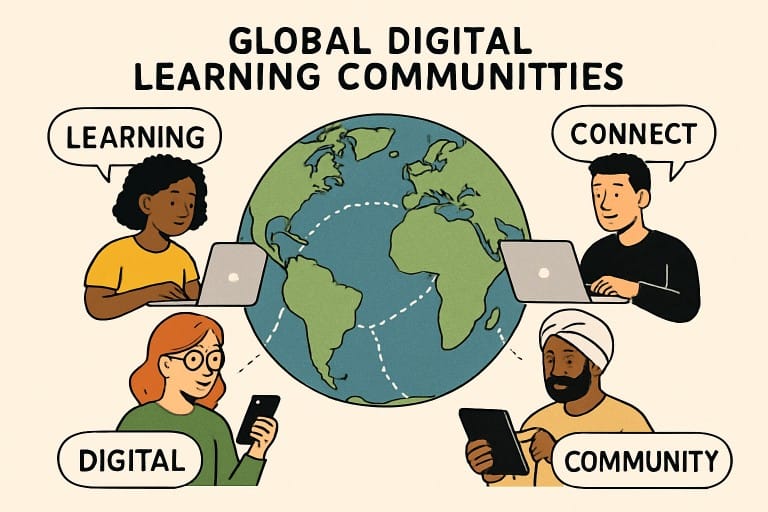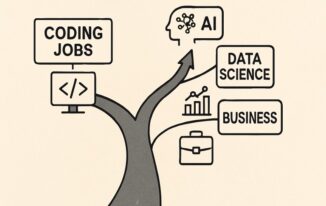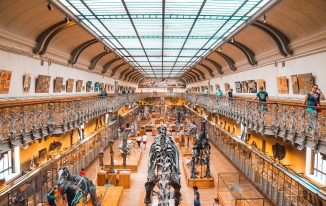Table of Contents
- Introduction
- Accessibility and Flexibility
- Peer-to-Peer Learning
- Diverse Content Selection
- Interactive and Engaging Features
- Personalized Learning Experiences
- Global Learning Communities
- Environmental Sustainability
In an era defined by connection and rapid technological progress, digital communities have cemented themselves at the forefront of educational change in almost every sector. What once seemed like a futuristic dream of learning without borders is now a daily reality for millions of people across the world. The rapid evolution of online platforms not only allows learners to access well-structured and diverse collections of resources, but also empowers them to collaborate in real time, participate in global forums, and engage in deeply meaningful learning experiences. The Sphere platform, for example, exemplifies how thoughtfully-built digital community tools are redefining the educational journey for people of every age, profession, and background, providing more flexibility, inclusivity, and power to each learner.
The profound shift from rigid, traditional classrooms to flexible, virtual spaces has unlocked entirely new dimensions of accessibility and adaptability. Learners are no longer bound by the walls of a physical classroom or by the restrictions of a preset timetable. Instead, digital communities harness global networks and enable people to learn and share their expertise anytime. This new paradigm supports a truly learner-centric approach, opening doors for students who might otherwise face significant barriers—be they logistical, social, or financial. Through robust, digital connections, education now meets the unique needs of the twenty-first-century individual, making learning a continuous and lifelong process for everyone.
Accessibility and Flexibility
Digital communities have dismantled many of the traditional barriers to education. Through the internet, anyone with a connected device—whether it’s a smartphone, tablet, or computer—can tap into a vast universe of learning materials and resources. This unprecedented level of access means that an aspiring coder in a remote rural town, a parent returning to school while balancing childcare, or someone with a disability that prohibits physical travel can participate fully in educational life. Flexibility remains a cornerstone of this revolution, as digital platforms enable learners to engage with course materials, interactive lessons, and lively group discussions at times convenient for them rather than being beholden to rigid schedules. The asynchronous nature of many digital platforms is crucial for modern learners who may be working full-time, managing family responsibilities, or pursuing education from different time zones.
Moreover, recent studies have shown how digital education’s flexibility results in higher satisfaction and lower dropout rates, especially for non-traditional students and adult learners. This flexibility allows a broader range of students, including those who have traditionally been marginalized by standard educational systems, to see learning as an ongoing and achievable goal. The democratization of education is speeding up as digital communities worldwide create inclusive learning spaces far beyond what brick-and-mortar schools could offer, helping to build more equitable and just societies.
Peer-to-Peer Learning
One defining feature of digital communities is the dynamic way they enable peer-to-peer learning. Unlike in traditional education systems, where the teacher remains the sole authority and students are passive recipients, online communities encourage learners to become active participants, sharing knowledge, exchanging perspectives, and offering constructive feedback within their networks. Projects like “One Sky, Many Voices” highlight how powerful peer engagement can be—learners worldwide study shared phenomena together, drawing insights not only from recognized experts but also from fellow learners of diverse backgrounds. This model deepens understanding and fosters important skills such as communication, critical thinking, and teamwork. As learners share what they know, ask questions, and help others, they prepare for real-world workplace dynamics, which increasingly value adaptability, resource sharing, and collaborative problem-solving.
Diverse Content Selection
The breadth and diversity of content offered by digital learning communities are truly unparalleled. No longer limited to the standard topics and teaching methods of a local curriculum, learners now benefit from access to an astonishing variety of courses, communities, and formats. Whether you are interested in studying advanced mathematics, learning a new language, exploring creative arts, joining a history discussion group, or attending technical workshops, there is almost certainly a vibrant online community ready for you. These resources are available in multiple languages, across various proficiency levels, and can appeal to people with vastly different personal interests or career aspirations.
Because digital platforms can accommodate an enormous array of interests, digital communities can create tailored experiences for every learner. Students can curate their educational paths based on professional goals, cultural identity, or preferred learning styles. This richness not only helps individuals gain the specific knowledge they seek but also fosters creativity, broadens perspectives, and encourages interdisciplinary thinking that can be directly applied to today’s complex problems.

Interactive and Engaging Features
Modern educational platforms harness groundbreaking technology to craft dynamic, engaging experiences. Interactive features—such as live quizzes, engaging video streams, collaborative group chats, and insightful discussion forums—emulate the richness of face-to-face education, while also introducing new dimensions to social learning. Students can pose questions during live sessions, participate in collaborative annotation on digital whiteboards, and receive tailored feedback within minutes, all from the comfort of their chosen environment. Gamification elements, like badges and progress tracking, as well as immediate recognition for achievements, can further motivate students and deepen their investment in ongoing learning. Research consistently shows that students who participate in interactive, community-based learning environments report higher engagement and retention than those learning in isolation or through purely passive content.
Personalized Learning Experiences
Personalization is rapidly becoming the hallmark of high-quality digital learning communities. Advances in technology make it possible for platforms to use intelligent algorithms that not only track individual user progress, but also adapt the content and difficulty based on ongoing performance and preferences. Features such as adaptive assessments, custom recommendation engines, and rich analytics dashboards enable learners to zero in on both strengths and areas for improvement. No two learning paths are ever exactly alike, and this deeply individual approach means users experience accelerated advancement, greater satisfaction, and enhanced retention of key information.
Moreover, the ability to self-direct and take ownership over their educational journey gives learners a heightened sense of agency, which most studies link to stronger academic outcomes and lifelong motivation. This ensures that education remains relevant, engaging, and genuinely rewarding, empowering users to forge solutions and master challenges that are most meaningful to them.
Global Learning Communities
The rise of digital communities means geographical barriers in education are no longer insurmountable obstacles. People from every corner of the globe, regardless of nationality, culture, or socioeconomic status, can join together in the pursuit of knowledge. Online platforms expose learners and educators not only to new viewpoints, but also to unfamiliar traditions and languages, significantly broadening their worldviews. This cross-cultural exchange is more than surface-level interaction—it’s an essential training ground for the collaboration and communication skills demanded by today’s global economy. Engaging with peers from diverse backgrounds encourages empathy, sharpens intercultural awareness, and cultivates a respect for multiple perspectives. Digital communities are thus transforming education into a truly borderless enterprise that matches the interconnectedness of our modern world.
Environmental Sustainability
The move to digital learning offers clear, positive impacts for environmental sustainability. As classrooms go virtual, the demand for printed textbooks, handouts, and excessive paper wastes shrinks dramatically. Likewise, digital platforms reduce carbon emissions significantly by minimizing the need for daily commutes or cross-country travel for conferences and classes. Campuses—often sizeable consumers of energy and physical materials—can streamline their operations and focus resources on necessary infrastructure rather than on maintaining buildings or grounds solely for instructional purposes. When students, teachers, and institutions embrace virtual learning, they lower energy use on lighting, heating, and other utilities, altogether reducing the educational sector’s ecological footprint. This shift supports larger global efforts to address climate change, making online learning an increasingly relevant part of institutional sustainability strategies.
In summary, digital communities are fundamentally reshaping how we approach learning, offering a more accessible, collaborative, interactive, and environmentally responsible alternative to traditional education. As technology continues to evolve and become entwined with our daily lives, these dynamic online spaces will remain essential for supporting lifelong learning and equipping people everywhere to succeed in our rapidly changing world.



